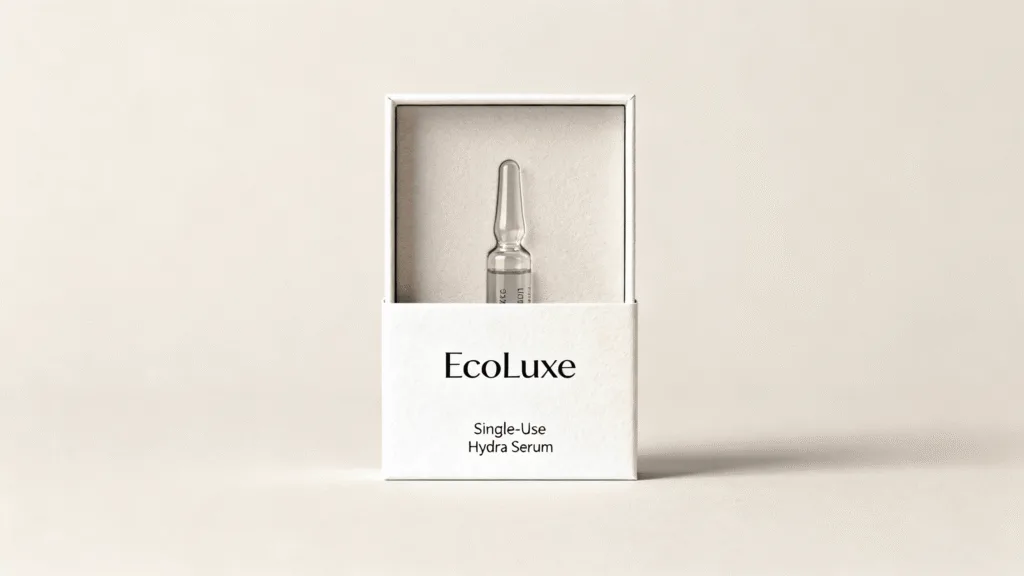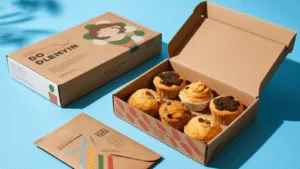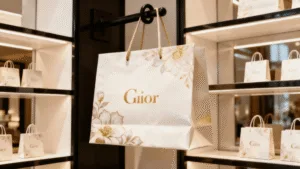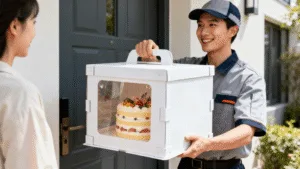Your beauty brand wants to be more sustainable, but you’re afraid minimalist packaging will look cheap. You feel caught between the consumer demand for less waste and the need to project a luxurious, high-quality image.
Yes, you absolutely can. Strategic minimalism and monodose paper packaging reduce waste while enhancing brand value. The key is shifting the perception of luxury from excess and weight to intelligent design, premium sustainable materials, and a conscious brand story.
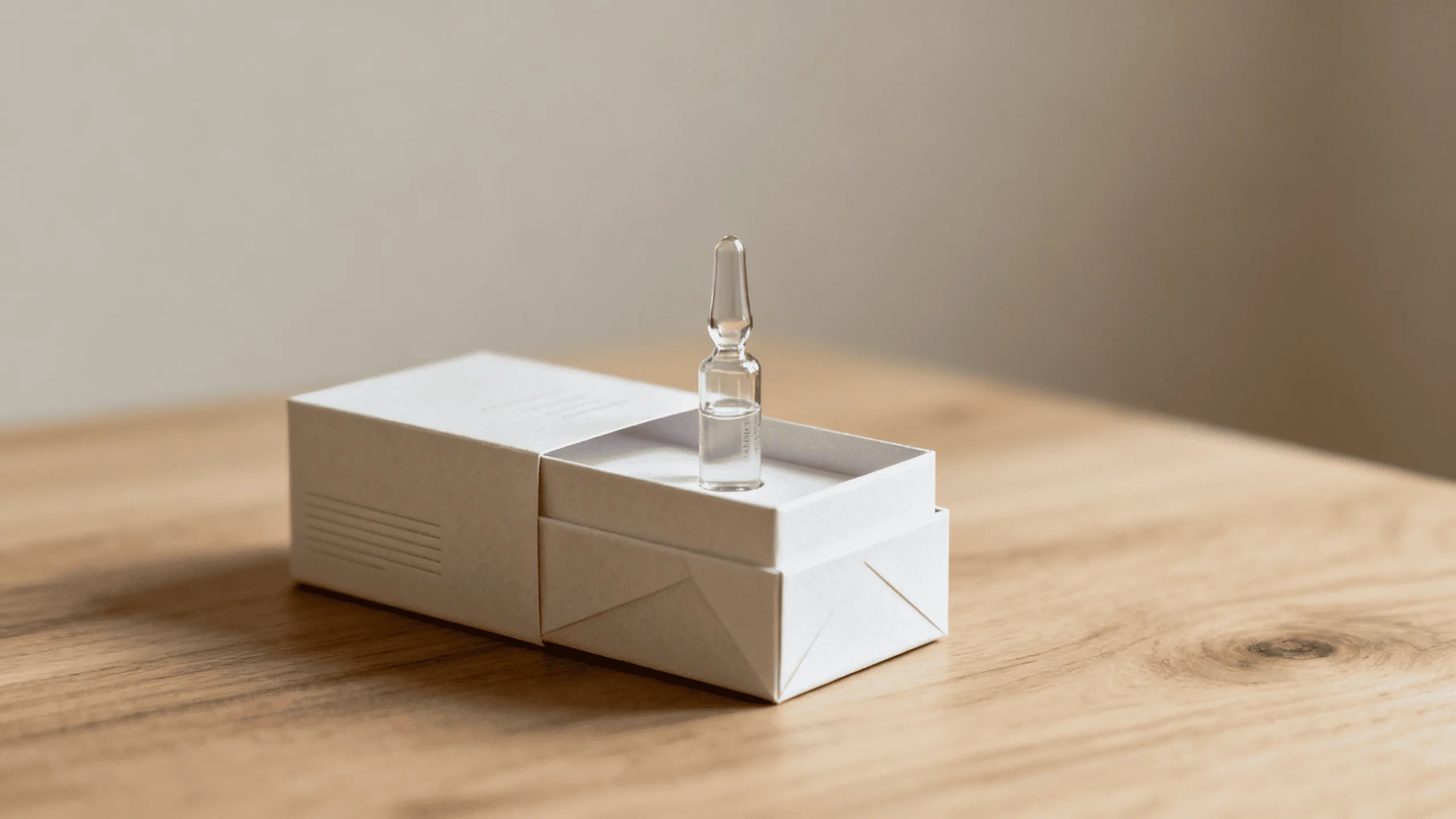
Over my career, I’ve seen many cosmetic brands struggle with this exact problem. They believe luxury requires heavy glass jars, thick-walled boxes, and multiple layers of packaging. A client once told me, "I can’t put my $150 serum in a simple paper box; my customers will think I cut corners." We challenged that assumption. We designed a small, elegant paper box from a heavily textured, recycled paper stock. Inside, a custom-molded paper pulp insert held a single-dose glass ampoule perfectly. The only branding was a crisp, blind-embossed logo. It looked intentional, modern, and incredibly chic. More importantly, it told a story of "conscious luxury." This approach isn’t about stripping value away; it’s about redefining it for the modern, eco-aware consumer.
What makes monodose paper packaging a smart move for cosmetics?
You see a growing demand for samples, travel-friendly products, and hygienic applications, but traditional plastic sachets and blister packs clash with your brand’s sustainability goals. This creates a disconnect between what your customers want and what your brand stands for.
Monodose paper packaging offers a sustainable solution for single-use products. It provides convenience, preserves product potency, and minimizes waste by replacing non-recyclable plastics with recyclable, paper-based alternatives for items like serums, masks, and treatments.
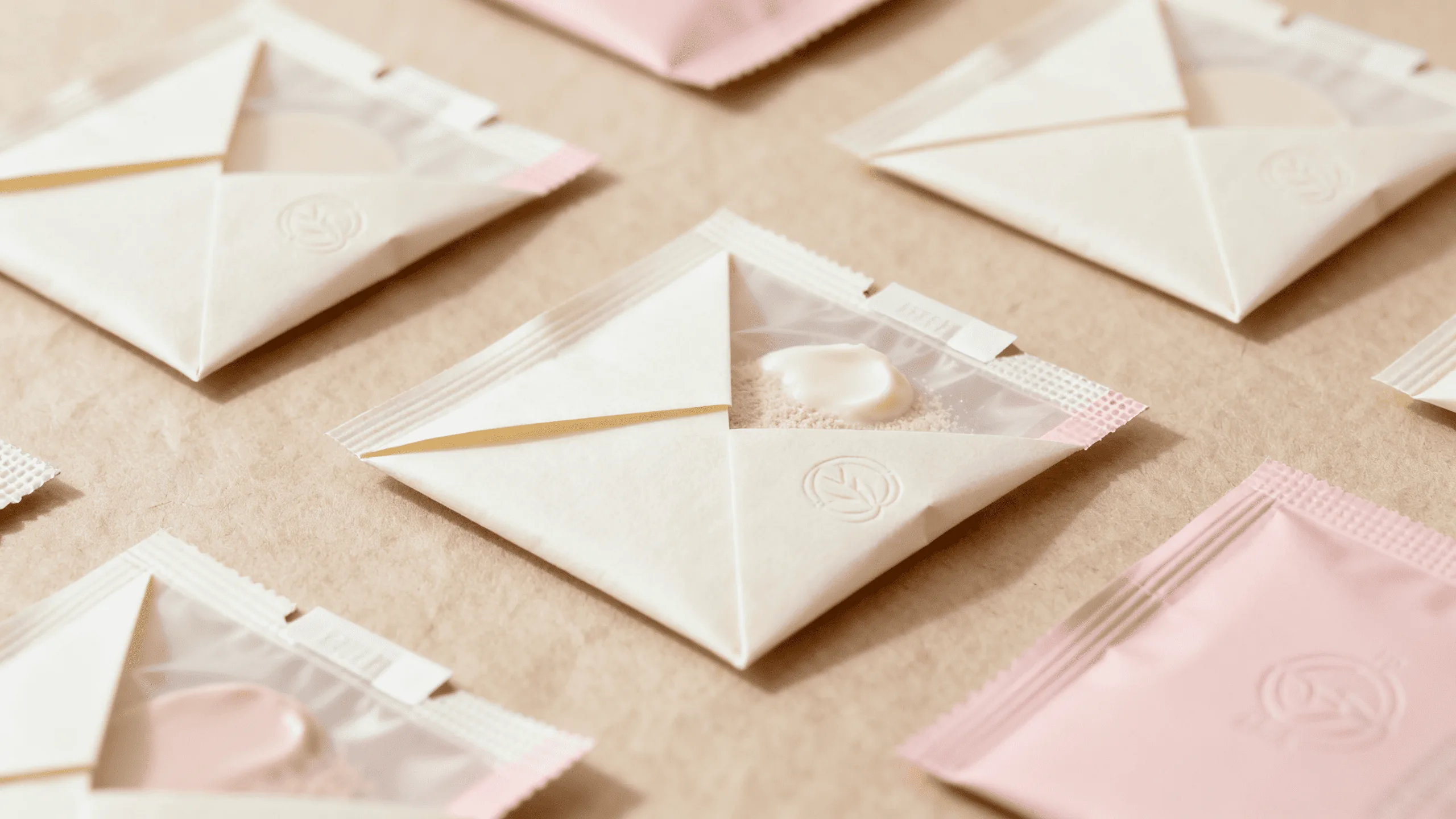
Monodose, or single-dose, packaging is gaining huge traction in the beauty industry for several reasons. First is hygiene. Consumers are increasingly wary of dipping their fingers into jars of cream. A single-use pod or ampoule ensures a fresh, uncontaminated application every time. Second is potency. Active ingredients like Vitamin C can degrade when exposed to air and light. A monodose format protects the integrity of the formulation until the moment of use. Finally, it’s about convenience and reducing product waste. Customers can travel light without packing bulky jars, and they use the exact amount needed, so no half-empty containers go to waste. The real innovation, however, is the shift in materials. For years, this format was dominated by plastic and aluminum foil laminates, which are notoriously difficult to recycle. Today, we can create monodose solutions from paper with specialized, food-grade barrier coatings that protect the product while ensuring the packaging remains fully recyclable.
The Rise of Paper-Based Solutions
The push for sustainability is driving material science forward. We are now able to create paper-based sachets1 and molded pulp trays that can hold liquids and creams, a task previously reserved for plastics. These innovations are game-changers for brands aiming for a circular packaging model.
Beyond the Sample
While perfect for sampling programs, monodose packaging2 is becoming a primary format. Subscription boxes, advent calendars, and targeted treatment systems all leverage the benefits of single-dose applications. It allows brands to offer variety and encourage trial in a controlled, premium way.
How can minimalist design actually feel more luxurious than traditional packaging?
You’ve been taught that luxury means more: more layers, more weight, more embellishments. The idea of using less material feels counterintuitive and risky, potentially cheapening your brand in the eyes of a customer accustomed to opulent packaging.
Luxury minimalism isn’t about emptiness; it’s about purpose. It communicates value through superior materials, flawless execution, and intelligent structural design. A heavier, textured paper stock, crisp typography, and a perfect fold can feel more premium than a cluttered, over-designed box.
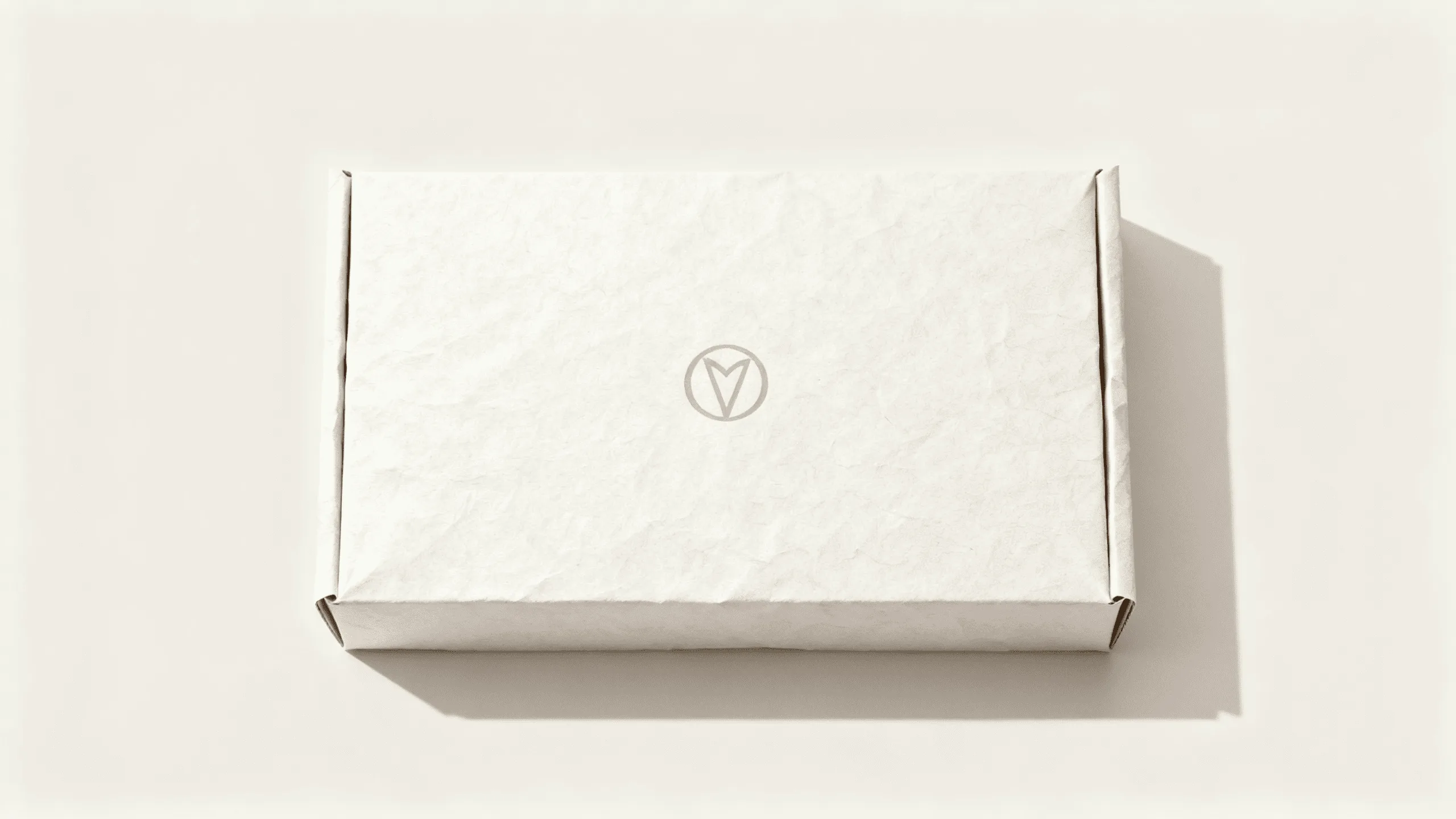
The aesthetic of luxury is changing. The modern luxury consumer often values quiet confidence over loud branding. Minimalist design taps directly into this trend. It suggests that the product is so good, it doesn’t need to shout. The focus shifts from decorative elements to the inherent quality of the materials and the precision of the construction. When a customer holds a box made from a substantial, tactile paper stock, the weight and texture alone convey value. A design that uses a unique structural fold instead of glue, or a blind emboss instead of bright foil, creates a sense of discovery and craftsmanship. It feels considered and intelligent. This approach respects the customer’s intelligence and aligns with a "less but better" philosophy. The key is to invest the budget you save on excessive layers or plastics into a higher-grade paper or a subtle, elegant finish.
Comparing Luxury Cues: Old vs. New
The signals that communicate a premium product are evolving. Here’s how traditional luxury compares to modern, minimalist luxury in packaging:
| Traditional Luxury Cue1 | Minimalist Luxury Cue2 | What It Communicates |
|---|---|---|
| Multiple Layers (Box-in-a-box) | Smart Structural Design (Self-closing folds) | Intelligence, efficiency, reduced waste |
| Heavy Glass & Plastic Jars | High-Quality, Textured Paper Stock | Natural quality, conscious choice, tactile appeal |
| Ornate, Colorful Graphics | Crisp, Considered Typography & Ample White Space | Confidence, clarity, sophistication |
| High-Gloss, Laminated Finishes | Subtle Finishes (Blind Emboss, Matte Varnish) | Understated elegance, focus on quality |
What are the tangible waste reduction benefits of this approach?
Your team needs to see the numbers. You need to justify a shift in packaging strategy not just with brand aesthetics, but with concrete data on waste reduction, cost savings, and improved sustainability metrics that you can report on.
This approach dramatically cuts waste by reducing material volume and weight, lowering the carbon footprint of shipping, and simplifying the recycling process. Using a single, recyclable material (mono-material) for a smaller box has a compounding positive effect across the entire supply chain.
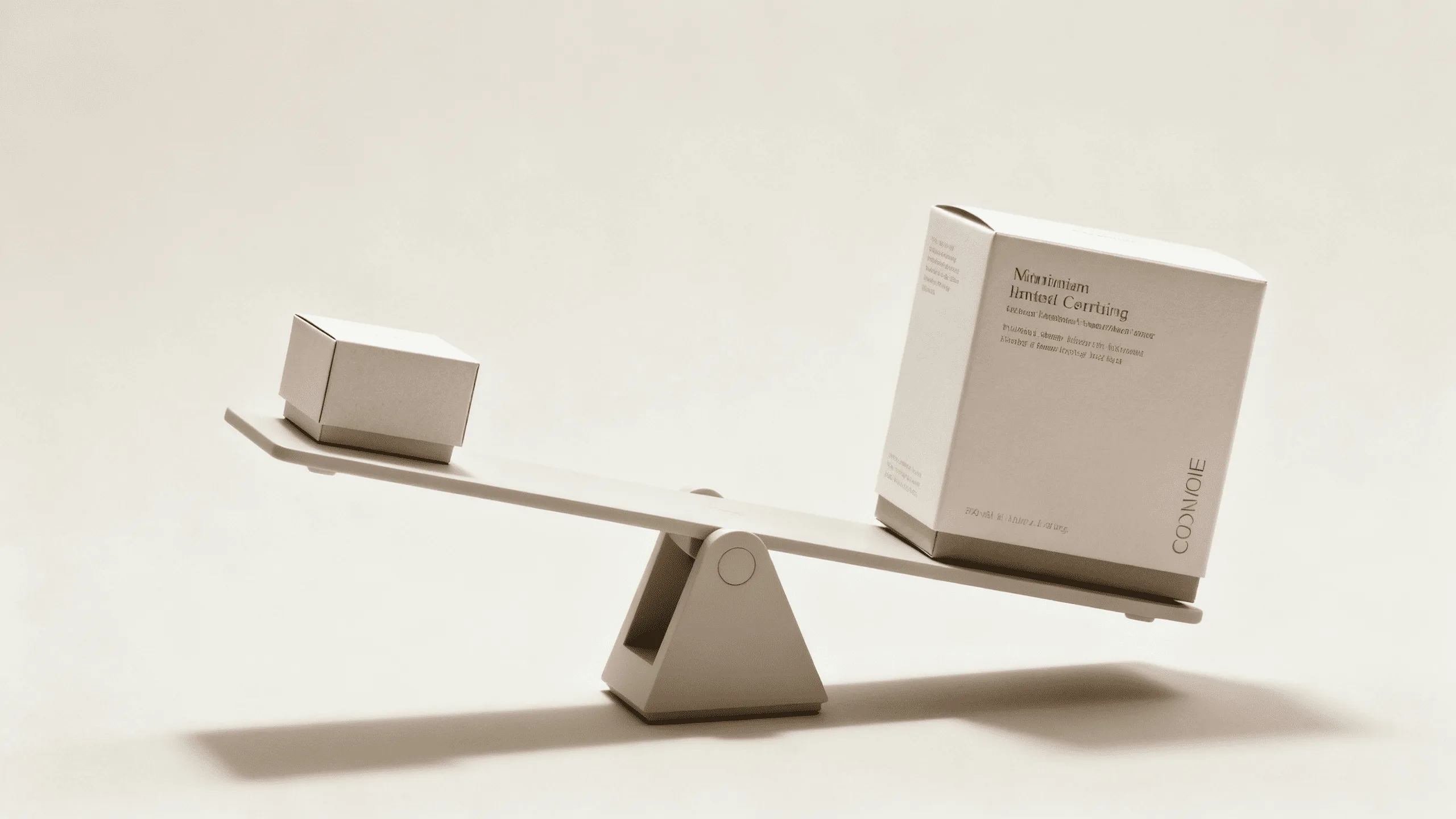
The sustainability benefits of minimalist and monodose paper packaging are multi-faceted. The most obvious is material reduction. By eliminating unnecessary layers, inserts, and oversized containers, you use significantly less paper, plastic, and glue. This directly reduces your consumption of natural resources. According to a report by the EPA, packaging and containers make up a major portion of municipal solid waste, so every reduction matters. The second benefit is shipping efficiency. Lighter, smaller boxes mean you can fit more units into a single shipping container. This drastically cuts fuel consumption and transportation costs per unit, lowering the carbon footprint of your entire logistics operation. I worked with a skincare brand that switched from a rigid, multi-part box to a streamlined, single-piece folding carton. They reduced their packaging weight by 60% and were able to increase the number of units per pallet by 40%, leading to massive savings on shipping.
The Mono-Material Advantage
One of the biggest obstacles to recycling is mixed materials. When a box has plastic laminates, magnets, and foam inserts, it’s destined for the landfill. A minimalist design that uses only paper and paperboard is a "mono-material" solution. This makes it incredibly easy for consumers to recycle, dramatically increasing the chances that your packaging will actually be reprocessed and used again.
Measuring the Impact
These benefits are not just theoretical; they are measurable. You can track metrics like "grams of packaging per unit sold," "carbon emissions per shipment," and "percentage of packaging that is curbside recyclable." These KPIs provide clear, reportable data on the success of your sustainability initiatives1.
You’ve created a beautiful, sustainable, minimalist package. But how do you ensure customers perceive it as a deliberate, premium choice rather than a cost-cutting measure? You need to control the narrative.
The key is to frame it as "conscious luxury." Use on-pack messaging, QR codes, and your brand’s digital platforms to tell the story behind your packaging choices. Explain that the minimalist design is intentional—a choice to prioritize quality and sustainability over excess.
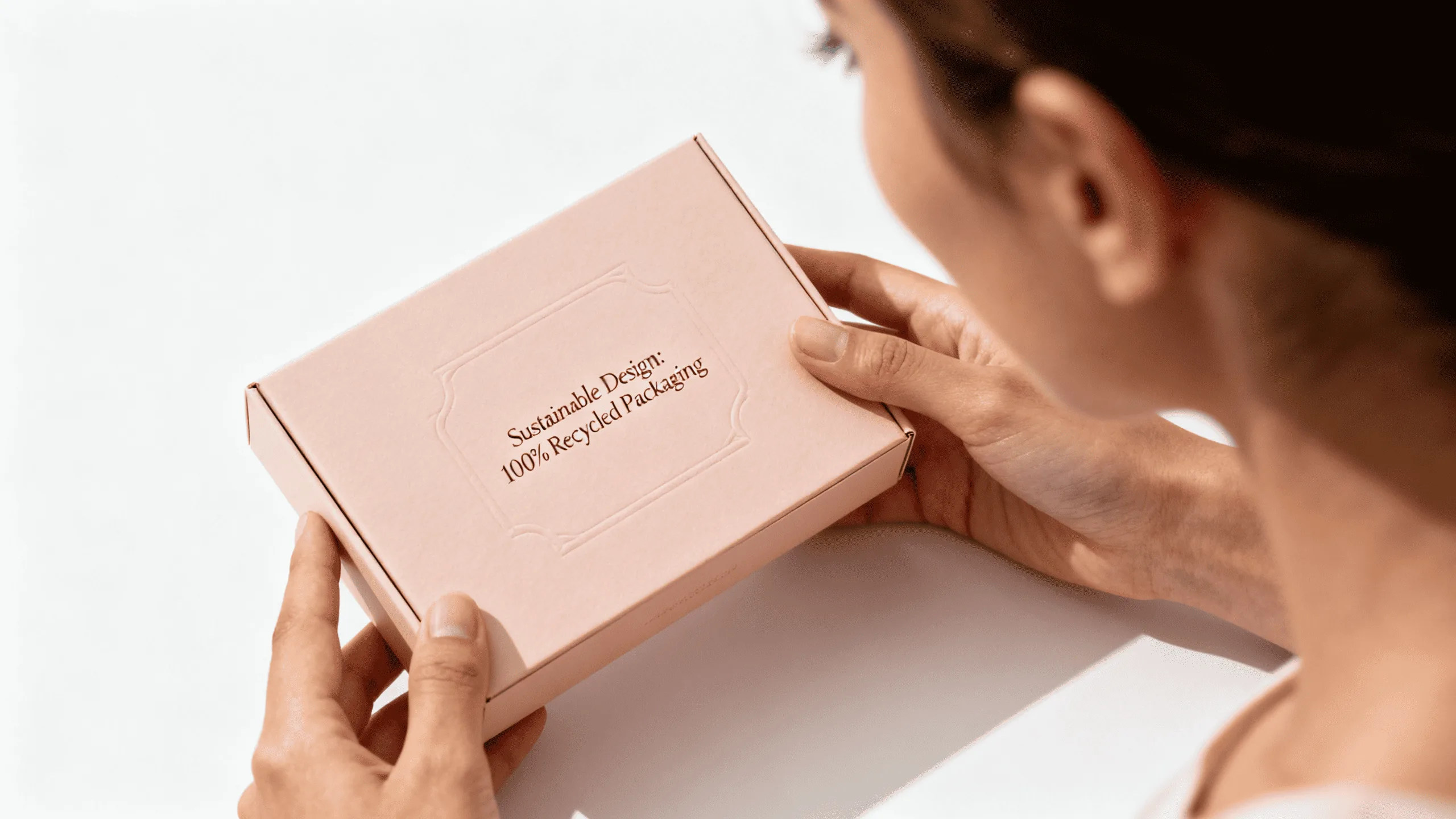
You cannot expect the customer to connect the dots on their own. You must actively guide their perception. The story begins on the box itself. A simple, elegant line like, "Intentionally designed with 70% less material to protect our planet," can instantly reframe the customer’s perspective. It turns the simplicity from a question into a statement of purpose. But the story shouldn’t end there. A QR code is a powerful tool for transparency. Link it to a beautifully designed landing page on your website that explains your packaging philosophy. Use visuals and short videos to show your commitment to responsible sourcing and waste reduction. This transparency builds immense trust. On social media, celebrate the elegance of the design. Encourage users to post "shelfies" that highlight the clean, sophisticated aesthetic. Position your brand not just as a beauty company, but as a leader in a movement toward more intelligent, responsible consumption. This transforms your packaging from a simple container into a powerful symbol of your brand’s modern values.
On-Pack Messaging is Key
Even the smallest message can have a big impact. Phrases like "Recyclable Mono-Material Box," "Printed with Soy Inks," or "FSC-Certified Paper" are small details that add up to a powerful story of responsibility.
The Digital Deep Dive
Use your digital channels to go deeper. A blog post detailing your journey to find the perfect sustainable paper, or an Instagram Reel showing the smart folding design of your box, makes your customers feel like insiders and strengthens their connection to your brand.
Conclusion
Minimalist and monodose paper boxes are not a compromise on luxury; they are its next evolution. By focusing on high-quality sustainable materials, intelligent design, and a transparent brand story, you can cut waste, reduce costs, and create a powerful, premium experience that resonates with today’s conscious consumer.
Ready to redefine luxury for your brand? Discover our custom cosmetic packaging solutions or contact us today to start designing a package that is both beautiful and responsible.
FAQ
Isn’t single-dose packaging inherently wasteful because it’s single-use?
This is a common misconception. While it is single-use, paper-based monodose packaging can dramatically reduce product waste (from expired or contaminated bulk products) and is designed to be easily recycled. Compared to a non-recyclable plastic sachet, a recyclable paper pod is a far more sustainable choice.
Is minimalist packaging always cheaper?
Not necessarily. While you save on material volume, minimalist luxury reinvests those savings into higher-quality materials (like premium textured paper) and finishes (like embossing). The ROI comes from reduced shipping costs and the ability to command a premium price for a thoughtfully designed, sustainable product.
Can paper packaging adequately protect sensitive cosmetic formulations?
Yes. Modern paper and paperboard can be treated with specialized, cosmetic-grade barrier coatings that are safe for direct contact. These coatings protect against moisture, oxygen, and light, ensuring the stability and efficacy of sensitive ingredients while maintaining the package’s recyclability.

